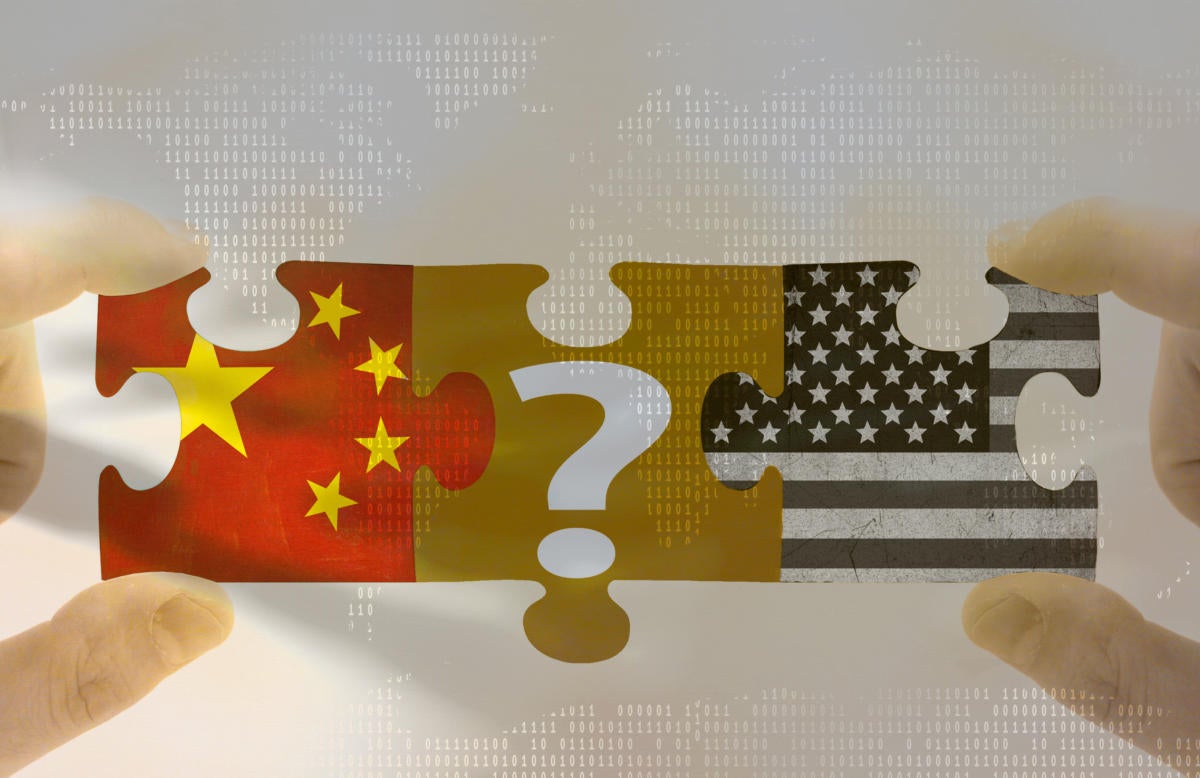
Software architecture has traditionally been associated with big design up front and waterfall-style delivery, where a team would ensure that every last element of the software design was considered before any code was written. In 2001, the "Manifesto for Agile Software Development" suggested that we should value "responding to change over following a plan," which when taken at face value has been misinterpreted to mean that we shouldn’t plan. The net result, and I’ve seen this first hand, is that some software development teams have flipped from doing big design up front to doing no design up front. Both extremes are foolish, and there’s a sweet spot somewhere that is relatively easy to discover if you’re willing to consider that up front design is not necessarily about creating a perfect end-state. Instead, think about up front design as being about creating a starting point and setting a direction for the team. This often missed step can add a tremendous amount of value to a team by encouraging them to understand what they are going to build and whether it is going to work.
"Disruption happens when small, nimble companies challenge incumbents with technology," said Conrad Burke, vice president of New Ventures at Intellectual Ventures and head of ISF Incubator, an incubator and accelerator within Intellectual Ventures, which creates and licenses intellectual property (IP). "Timing is everything. You have to be able to execute well and quickly because things can change rapidly." On the other hand, speed can kill. Many great ideas haven't taken off as expected simply because the timing was wrong. For example, at the turn of the millennium, mobile marketing was supposed to change the world. Now, 18 years later, marketers are advancing the same idea as if it's novel. The difference is that today we have smartphones that deliver slick experiences, as opposed to flip phones. In addition, the networks to which our phones are connected provide coverage just about everywhere and their significantly greater bandwidth supports many content types, not just text.
Why Microsoft’s Cosmos DB may displace AWS’s cloud databases
The reason for Cosmos DB’s ascendance may stem from declining developer interest in “polyglot persistence.” Coined by Thoughtworks’ Martin Fowler back in 2011, polyglot persistence suggests that “any decent sized enterprise will have a variety of different data storage technologies for different kinds of data.” Rather than forcing data to fit a relational data model, for example, an enterprise will more likely embrace wide-column data for some parts of an application, a graph database for others, and relational for still others. The popularity of databases like MongoDB is a clear sign that, in fact, we do live in an increasingly polyglot world. Microsoft’s genius with Cosmos DB is that developers may want to have their polyglot persistence cake and eat it too—all in one place. As InfoWorld’s Serdar Yegulalp has written, “With Cosmos DB, Microsoft offers multiple consistency models in the same database, so the choice of model can be a function of the workload rather than the product.” That’s huge.

“Going forward, I believe you’ll see a basic need for talent that understands the fundamentals of algorithms to create AI systems, as well as general design and even some psychology and understanding of human behavior,” Fermin says. “People who are tasked with designing and building, say, chatbots will need to understand how to give those technologies human characteristics and make the interactions indistinguishable from interacting with another human being — how can it show empathy, compassion, creativity, communication,” he says. But how can job seekers emphasize these kinds of “middle ground” skills on their resume? You can’t simply list them as you would harder tech skills; you should take the same approach you would when highlighting your soft skills, says Quizlet’s Glotzbach. “Emphasize how you’ve learned on the job, or how you’ve invested in a post-graduate education through online courses, microcertifications, bootcamps — anything like that,” Glotzbach says.
Why A Cyberattack Could Cause Infrastructure To Fall Like Dominoes
The biggest motive for cyberattacks over the past few years has been financial gain. Hackers shut down a network and demand a ransom before halting an attack or giving the victim access to their network. With profit in mind, companies that, presumably, have the cash to pay ransoms are typically the target. But infrastructure operators can be victims of hackers facing any number of motivations, including money, politics or vandalism. There are strong indications that bigger and more organized actors — in some cases nation-states — have probed U.S. nuclear power plants, a dam in New York and a network that sits at the center of the global banking system. Fear of retaliation is likely the best explanation for why a major attack hasn’t occurred. Those who have the means are likely just as vulnerable.
Apple confirms all devices affected by Meltdown and Spectre

While all Mac systems and iOS devices are affected, Apple said there were no known exploits impacting Apple device users and recommended downloading software only from trusted sources. Apple has released mitigations in iOS 11.2, macOS 10.13.2, and tvOS 11.2 to help defend against Meltdown, and said the Apple Watch was unaffected. The impact of the mitigations for Meltdown have been estimated as high as a 30% reduction in performance, but Apple claimed that updates it had released so far resulted in “no measurable reduction in the performance” of macOS and iOS. Apple also plans to release mitigations in its Safari browser to help defend against Spectre “in the coming days” and said testing indicated that the Safari mitigations would have little or no measurable performance impact.
France goes after companies for deliberately shortening life of hardware
Printer manufacturers “deliberately shorten the life of printers and cartridges,” a French environmental and consumer protection group claims. That's against the law in France, and government prosecutors have agreed to investigate the claims. If the lawsuit against the printer company, Japan-based Epson, is proven, the firm could be found guilty of breaking a little-known French law that stipulates vendors can’t purposefully lower the lifespan of a product to ramp up replacement rates. A conviction could be significant for tech hardware manufacturing overall. Nabbing Epson would likely affect not only how hardware is built and sold in France, but it also could mean laws get adopted in other European territories —individual nations are involved in the functioning of the EU bloc overall.
5 steps to becoming a global IT leader

An IT leader in a multicultural environment must also be aware of his or her own cultural framework, observes Annalisa Nash Fernandez, a New York-based intercultural strategist who advises international executives on cross-cultural communication. "For an American CIO, that may mean a high degree of individualism and personal accountability, a task-based versus relationship-based approach and a linear view of project timing, which is the lens through which the diverse cultures and business styles of the teams abroad will be understood and processed," she explains. Begin the journey with face-to-face contacts to better know your customers, business partners and team, suggests Keith Collins, executive vice president and CIO of SAS. "Language and cultural differences make conference calls difficult at best," Collins says. "Practicing empathy is critically important in this environment."
China to block SD-WAN and VPN traffic by Jan. 11

Millions of Internet users relied on virtual private networks (VPNs) to circumvent the Chinese censorship system, dubbed the Great Firewall of China. In the past, VPNs have worked intermittently but were invariably blocked, forcing users to jump to another VPN. The new regulations will block VPN access to unregistered services. Crackdowns on accessing the Internet beyond the Great Firewall — the world’s most sophisticated state-censorship operation, employs at least 2 million online censors. But this news highlights how the world’s second largest economy is struggling to balance authoritarianism with its business leadership aspirations. In addition, a strict new cybersecurity law came into effect in June. In July China Telecom, the nation’s biggest Internet service provider, sent a letter to corporate clients that said in future, VPNs would only be allowed to connect to a company’s headquarters abroad.
Four Age-Old Business Problems Machine Learning Will Soon Solve

The hype surrounding machine learning has been accelerating and expanding for years. Supporters talk about the potential of this technology to improve every process and eliminate any issue. In many cases, the levels of optimism and excitement have reached a fevered pitch. Less enthusiastic observers, however, have noted that the promise of machine learning is often described in broad terms and abstract assertions. The combination of technical jargon, hazy use cases, and vague details leaves many wondering how accessible and advantageous machine learning really is. That suspicion is valid, even important. But at the startup level, the machine learning market is innovating and advancing fast. Better still, the technologies in the pipeline are intended neither for the biggest companies nor the most complex processes. Rather, they are being designed to solve age-old business problems that could plague any enterprise.
Quote for the day:
"A mistake is a crushing weight to a pessimist and a trampoline to an optimist." -- Tim Fargo

No comments:
Post a Comment